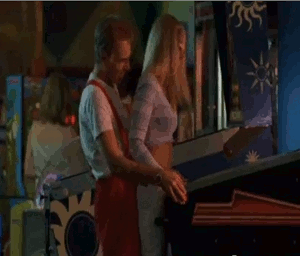I am in Orlando for work and found out that the hotel next to me has a Star Trek Pro and an Avengers Pro in it. Having owned a ST Premium in the past, I decided I was going to put some games on Avengers as I had only played 2-3 games on it prior to yesterday.
While the game isn't in the best shape, it's playable. The Hulk drops don't work and the flippers are a bit weak (the top one is a bit sticky, too), but from what I have gathered, I can complete modes. Excellent.
However, I was having trouble scoring more than about 4-6m on this game. Part of this is because the shots are insanely tight and my accuracy isn't as good as it needs to be, but the other issues I'm having are that I simply suck at nudging. Like, apparently, I super suck.
I've attached an image of 2 drains I experienced MULTIPLE times:
The shot coming from Captain America is one where I typically bricked to the left off of that post. The one from Hulk is because the ball would get stuck under his arm and trickle down (that is a MAJOR problem on this game if not tweaked I think...In the 15 games I have played on it, it has happened every single game at least once, often multiple times). I don't think I managed to save any of these shots. I tried everything, but I simply couldn't do it.
The outlanes are another issue. The ball would sort of balance on the post and fall to the outlane. I would try and shake a little, but I never managed to get it back into the inlane.
I played a bunch on location this past weekend at Pinball Pete's in Ann Arbor. The games were in OK condition (the modern Sterns were in great condition, the rest were OK to bad). I was having similar issues here - I just couldn't control the ball with nudging. Even if I were nailing shots (as I did on SM when I got my initials on location for the first time ever), I would still lose a ball because I couldn't nudge.
So my question/request is this:
How does one learn to nudge better? Watching the greats play has helped me understand that nudging is required, but since I've never really seen or read a good explanation of the nuances of nudging, I feel like I'm more slapping and shaking the machine for the hell of it (obviously not true, but that's what it feels like sometimes). I also see people nudge and get no warnings, and when I try what FEELS like is a similar motion, I get a warning/double warning/TILT. So I feel like I'm just plain bad at this skill.
Yes, practice makes perfect...But I was hoping someone could either link me a good writeup or video on the subject to help me improve! Avengers is a good example of a game that I feel like I would enjoy more than I do if I were able to keep my ball alive for longer than 60 seconds or so.
Thanks folks!



 Avon, IN
Avon, IN
 Armidale
Armidale

